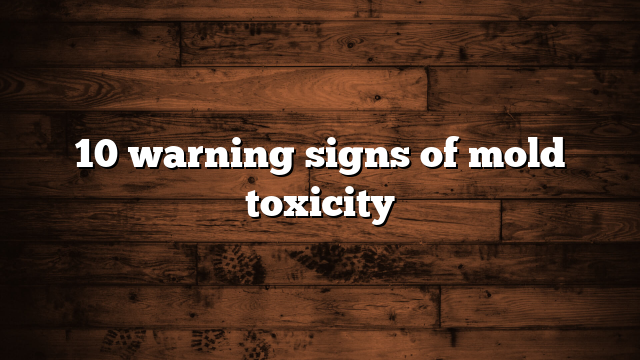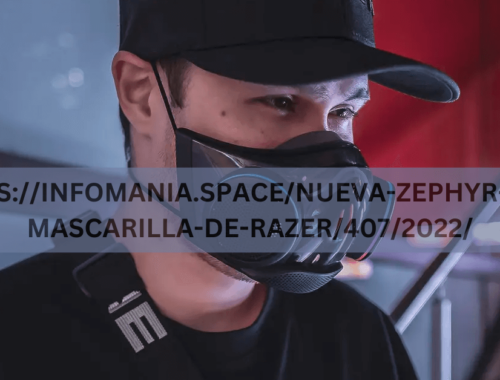
10 warning signs of mold toxicity
Let’s start reading about 10 warning signs of mold toxicity
10 Warning Signs of Mold Toxicity
Mold toxicity is a serious health concern that can have detrimental effects on both physical and mental well-being. Mold is a type of fungus that thrives in damp and humid environments, such as bathrooms, basements, and areas with water damage. Exposure to mold can lead to various health issues, ranging from mild allergies to severe respiratory problems. It is essential to be aware of the warning signs of mold toxicity to take necessary precautions and seek medical help if needed.
1. Persistent Respiratory Issues
One of the most common warning signs of mold toxicity is persistent respiratory issues. If you experience frequent coughing, wheezing, shortness of breath, or chest tightness, mold exposure could be the culprit. Mold spores can irritate the respiratory system, leading to inflammation and breathing difficulties.
2. Allergic Reactions
Allergic reactions, such as sneezing, runny nose, itchy eyes, and skin rashes, are often indicative of mold toxicity. Mold spores can trigger allergic responses in sensitive individuals, causing discomfort and worsening existing allergies.
3. Fatigue and Weakness
Experiencing unexplained fatigue, weakness, and lethargy could be a sign of mold toxicity. Mold exposure can impact the immune system and overall health, leading to feelings of exhaustion and low energy levels.
4. Cognitive Impairment
Mold toxicity can also affect cognitive function, leading to issues such as memory problems, difficulty concentrating, and brain fog. If you notice a decline in cognitive abilities without any apparent cause, mold exposure may be a contributing factor.
5. Headaches and Migraines
Frequent headaches, migraines, and sinus pressure can be symptoms of mold toxicity. Mold spores can trigger inflammation in the sinuses and blood vessels, leading to painful headaches and migraines.
6. Digestive Problems
Digestive issues, such as nausea, vomiting, diarrhea, and abdominal pain, can be linked to mold toxicity. Mold exposure can disrupt gut health and lead to gastrointestinal symptoms that impact overall well-being.
7. Skin Irritation
Skin irritation, including rashes, itching, and redness, can be a warning sign of mold toxicity. Direct contact with mold or mold spores can irritate the skin and cause allergic reactions.
8. Sensitivity to Light and Sound
Increased sensitivity to light and sound can be a neurological symptom of mold toxicity. Mold exposure can impact the nervous system, leading to heightened sensitivity to sensory stimuli.
9. Mood Swings and Depression
Mold toxicity can also affect mental health, causing mood swings, anxiety, and depression. The presence of mold in the environment can contribute to emotional distress and worsen existing mental health conditions.
10. Chronic Inflammation
Chronic inflammation is a common consequence of mold toxicity, as mold exposure can trigger an immune response that leads to persistent inflammation throughout the body. Chronic inflammation is linked to various health issues and can exacerbate existing conditions.
FAQs
1. Can mold toxicity be treated?
Yes, mold toxicity can be treated through a combination of avoiding exposure to mold, improving indoor air quality, and seeking medical treatment for symptoms.
2. How can I prevent mold toxicity in my home?
To prevent mold toxicity, it is essential to address any water leaks or moisture issues promptly, maintain proper ventilation, and keep indoor humidity levels below 60%.
3. Are there specific tests for diagnosing mold toxicity?
There are tests available, such as blood tests and urine tests, that can help diagnose mold toxicity by detecting specific biomarkers of mold exposure in the body.
4. Can mold toxicity lead to long-term health problems?
Yes, prolonged exposure to mold toxicity can lead to long-term health problems, including respiratory issues, neurological symptoms, and chronic inflammatory conditions.
5. Is it safe to clean mold myself?
It is recommended to seek professional help for extensive mold remediation to ensure safe and effective removal of mold from your home. Protective gear should be worn when cleaning mold to prevent exposure.
6. Can mold toxicity affect pets?
Yes, pets can also be affected by mold toxicity, experiencing similar symptoms such as respiratory issues, skin irritation, and digestive problems. It is important to ensure a mold-free environment for pets as well.
7. How soon should I seek medical help if I suspect mold toxicity?
If you experience any of the warning signs of mold toxicity and suspect mold exposure, it is advisable to consult a healthcare provider promptly for evaluation and appropriate treatment.
Conclusion
In conclusion, being aware of the warning signs of mold toxicity is crucial for maintaining a healthy living environment and safeguarding your well-being. If you experience any of the symptoms mentioned, it is essential to address potential mold exposure promptly and take necessary steps to mitigate risks. By understanding the signs of mold toxicity and taking proactive measures, you can protect yourself and your loved ones from
related terms: 10 warning signs of mold toxicity
You May Also Like

ag2ga46
April 4, 2024
https://infomania.space/nueva-zephyr-pro-mascarilla-de-razer/407/2022/
February 27, 2024

